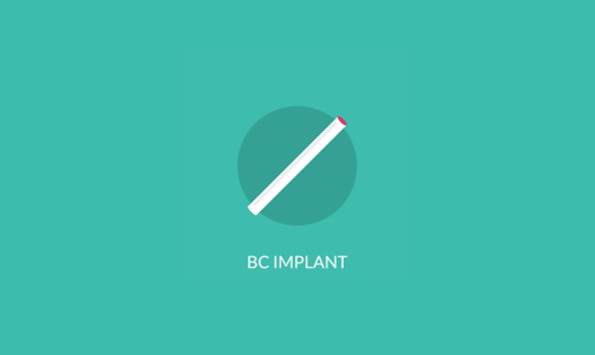Contraceptive Implant
Contraceptive implant:
It is a small flexible stick (size: 4 cm by 2 mm) from plastic implanted by the doctor under the skin of the inside the upper arm, releasing progesterone (68 mg) to prevent pregnancy by:
– thickening cervical mucus, makes it hard for the sperm to reach the uterus.
– making the uterus lining thin, so the egg can not implant itself and grow.
– preventing ovulation.
Implantation timing:
– During the first 5 days of menstrual cycle: effective immediately.
– In any other day: it is advised to use another contraception method like condoms for 7 days.
– Less than 21 days after birth: effective immediately.
– 21 days or more days after birth: it is advised to use another contraception method like condoms for 7 days.
Contraindications:
1. Liver tumors or disease
2. Current or past history serious blood clots
3. History or current breast cancer
4. Abnormal vaginal bleeding (between periods or after intercourse)
5. Allergy to implant components
6. Possibility of pregnancy
7. Lupus
8. History of heart disease, arterial disease or stroke
Advantages:
1. Protection up to 3 years, and may stay effective up to 5 years
2. More than 99% effective. (less than 1 woman every 100 may get pregnant)
3. Safe with breastfeeding
4. May reduce menstrual flow which reduces the risk of anemia, and its related pain
5. Back to fertility quickly when removed, ovulate normally within 3 to 4 weeks of removal
6. An option for ladies can not use estrogen
Disadvantages / side effects:
1. Skin redness (3%), bruising (2%), pain (1%), hematoma (3%) or swelling (less than 1%)
2. May cause irritation, itching, and fibrosis during insertion and removal, possibility around 1%.
3. Period irregularity, or stops completely.
4. Unscheduled bleeding.
5. Does not protect against sexually transmitted diseases.
6. Some side effects during the first few months, including: mood swings (6%), ,headache (16%), acne (12%), breast tenderness (10%), weight gain (12%) abdominal pain (5%)
7. Possibility of ectopic pregnancy in case of failure.
8. May increase the risk of ovarian cysts/follicles.
9. Expulsion (rare) mostly during the first 4 months.
10. Migration due to improper insertion, such as in a blood vessel (rare)
11. Nerve injury (rare).
Some medications may affect the implant effectiveness, so in case of use of these medications, it is advised to use another contraception method such condoms or switch to another contraception method. Medications are:
– some seizure medications: phenytoin, carbamazepine, barbiturates, primidone, topiramate, oxcarbazepine
– some sedatives
– some HIV medications: efavirenz-containing regimens
– some antibiotics such as rifabutin or rifampicin
How is it implanted?
The procedure takes only a few minutes.
1. Local anesthetic is injected in the area in the upper arm.
2. Small incision is done.
3.The implant is inserted under the skin.
4. The injected site is covered by bandage with keeping it dry for 3 – 5 days.
5. Pressure bandage might be applied to minimize bruising, removed after 24 hours.
6. Bruise, bleeding or pain at the injection site is expected. In rare cases, the site can get infected.
The lady should go to the hospital if:
1. Prolonged unusual vaginal bleeding.
2. Yellowing of the skin or the eyes.
3. Severe chest pain and shortness of breathing.
4. Severe sudden headache.
5. Breast lumps.
6. Signs of pregnancy.
7. Site infection: discharge, swelling or redness.
8. Signs of blood clot in the leg such as persistent pain and swelling.
9. Signs of allergy such as face or tongue swelling.
10. It feels that it has moved or changed its shape.
Removal:
In the clinic:
1. Local anesthetic is injected in the implantation site.
2. Small incision is made.
3. The implanted then is pushed until the doctor is able to pull it out with forceps.
4. Pressure bandage is applied.



